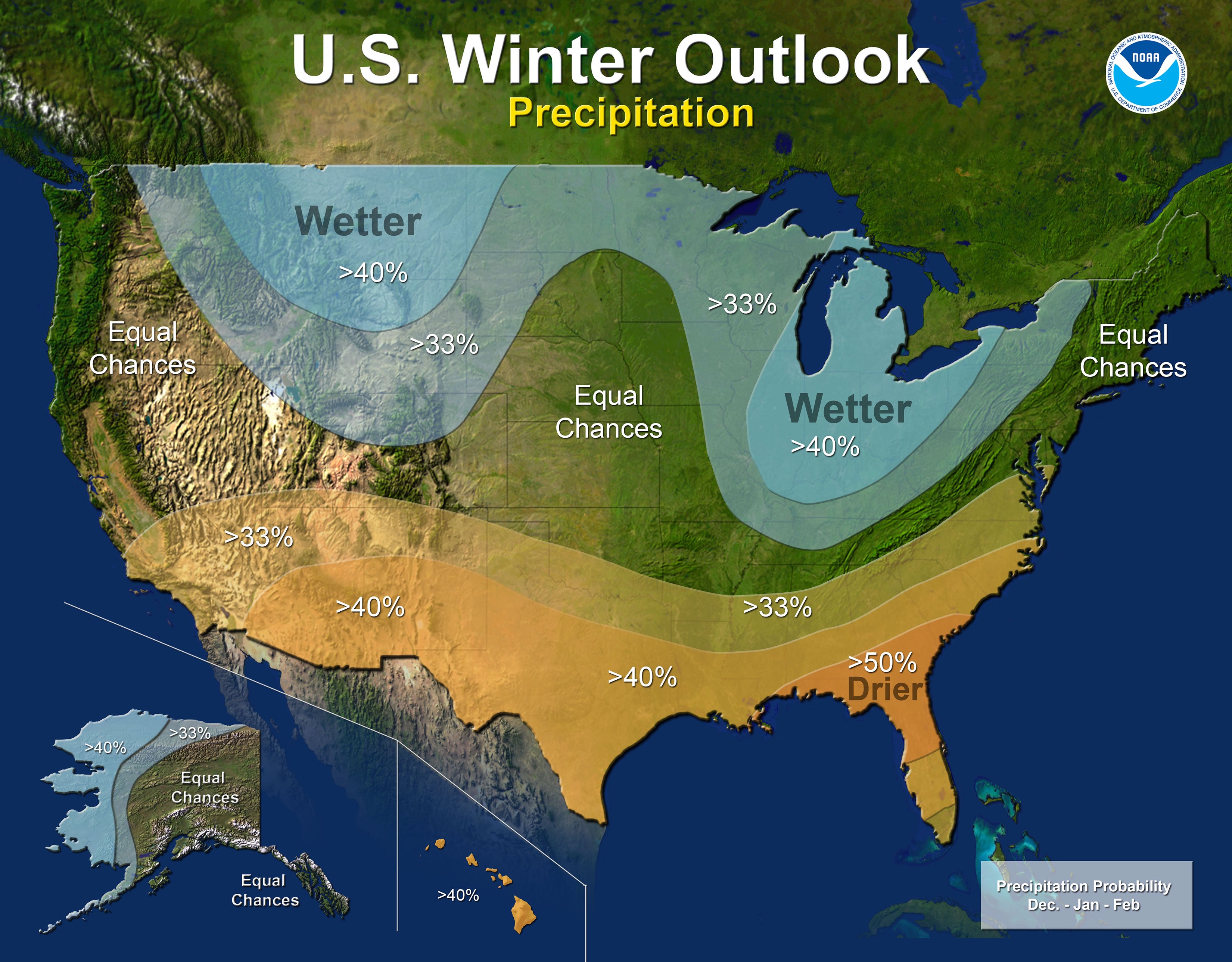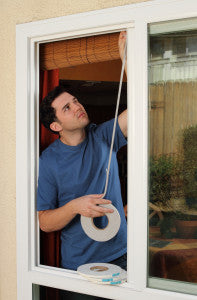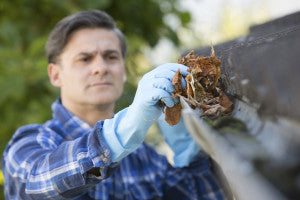The National Oceanic and Atmospheric Administration released its winter weather outlook last week. A La Nina weather pattern might form, bringing colder, wetter weather than average to many northern states and warmer, drier weather than average to southern states, similar to last year. Or,
it might not.
[caption id="attachment_22282" align="aligncenter" width="600"]

Winter 2017 Outlook Map - NOAA[/caption]
The one thing we can be sure of is that winter will follow autumn, bringing colder weather. This story from
The Weather Channel can give you an idea of when your area sees its first winter weather. Already, an
atmospheric river is bringing snow and flooding to the Pacific Northwest.
Snowstorms hit the western United States at the end of September.
Oklahoma saw tornadoes last week. On the other hand, southern California is looking at record-high temperatures and
Santa Ana winds that will aggravate fire conditions and could make Tuesday’s World Series game the hottest ever.
It doesn’t take a natural disaster or power outage to make a home’s temperature intolerable. A furnace or air conditioner dying will do the same thing. In August, the weekend after my family moved in to our new home, our air conditioner broke. The temperature inside our home climbed above 85 degrees. Yearly, tune up your air conditioner, furnace or boiler, clean air ducts and consider an annual service contract. Change filters monthly.

Caulk and weather-strip doors and windows. If you can’t replace leaky windows, at least cover them with plastic,
ready.gov recommends.
Big box stores sell equipment for those chores. Homeowners can also add or replace door sweeps and adjust locks on window sashes to seal gaps in windows.
“If you added up all the leaks, holes and gaps in a typical home's envelope, it would be the equivalent of having a window open every day of the year,”
according to the U.S. government’s Energy Star program.
A fireplace or wood stove is useful for emergency heating, but inspect the flue each year, suggested the U.S. Centers for Disease Control. Also, install a smoke detector and carbon monoxide detector nearby.
A generator can also provide power for heating and cooling. Consider investing in one during the fall when heating and cooling bills are lower and storms aren’t as common. Make sure your generator
vents to the outside, to prevent carbon monoxide buildup.
If possible, call in an arborist to look for rotting, damaged, or dangling tree limbs. That’s especially important if a tree is growing near power lines. Trees are involved in about 30 percent of power outages,
according to ConsumerEnergy.com.
Our family recently got a tree removed from our backyard. We didn’t know that it was supporting two other trees. When the workers chopped down our tree, a huge limb from another tree cracked off and fell on the neighbors’ backyard storage shed. Shortly thereafter, a mild wind blew up. A third tree, whose branches had been entangled with our tree’s, was flapping wildly. If a large windstorm ever hits, we decided, that tree is a goner too.
The arborist who cut down our tree said the three trees were so entangled because no one had cut them back for years. Pay attention to your trees.

At a minimum,
clean rain gutters yearly, preferably in the late fall. If you wait until late fall, most of the leaves will be off the trees, so you can get them out of the gutter all at once. This will help prevent ice building up in blocked gutters,
according to DoItYourself.com. As snow melts, or as a winter monsoon dumps extra rain, blocked gutters can cause the water to flow into places it’s not supposed to, like basements.
“Improper gutter maintenance will lead to clogged or damaged gutters and can cause thousands of dollars in damage to your home's foundation, exterior trim, or basement,” the site said.
Have you ever shoveled snow and slammed into a crack in your sidewalk hard enough to make your shovel arm vibrate? I have. I wouldn’t recommend it. If you can, fix cracks in sidewalks and driveways.
Yes, all these steps cost money. But consider how much it will cost if a branch lands on your home. Or what you’ll pay if you have to go to a hotel because you don’t have heat after a storm. Or the cost of hospitalization (or worse) for carbon monoxide poisoning because of a blocked chimney flue or inadequately ventilated generator.
If nothing else, these steps provide peace of mind. Prepare now, so when a winter storm hits, as it invariably will, you won’t have anything to worry about other than making hot chocolate.
Melissa Rivera is a jack-of-all-trades who is master of none. She has been a writer and editor for more than 15 years.

 Winter 2017 Outlook Map - NOAA[/caption]
The one thing we can be sure of is that winter will follow autumn, bringing colder weather. This story from The Weather Channel can give you an idea of when your area sees its first winter weather. Already, an atmospheric river is bringing snow and flooding to the Pacific Northwest. Snowstorms hit the western United States at the end of September. Oklahoma saw tornadoes last week. On the other hand, southern California is looking at record-high temperatures and Santa Ana winds that will aggravate fire conditions and could make Tuesday’s World Series game the hottest ever.
It doesn’t take a natural disaster or power outage to make a home’s temperature intolerable. A furnace or air conditioner dying will do the same thing. In August, the weekend after my family moved in to our new home, our air conditioner broke. The temperature inside our home climbed above 85 degrees. Yearly, tune up your air conditioner, furnace or boiler, clean air ducts and consider an annual service contract. Change filters monthly.
Winter 2017 Outlook Map - NOAA[/caption]
The one thing we can be sure of is that winter will follow autumn, bringing colder weather. This story from The Weather Channel can give you an idea of when your area sees its first winter weather. Already, an atmospheric river is bringing snow and flooding to the Pacific Northwest. Snowstorms hit the western United States at the end of September. Oklahoma saw tornadoes last week. On the other hand, southern California is looking at record-high temperatures and Santa Ana winds that will aggravate fire conditions and could make Tuesday’s World Series game the hottest ever.
It doesn’t take a natural disaster or power outage to make a home’s temperature intolerable. A furnace or air conditioner dying will do the same thing. In August, the weekend after my family moved in to our new home, our air conditioner broke. The temperature inside our home climbed above 85 degrees. Yearly, tune up your air conditioner, furnace or boiler, clean air ducts and consider an annual service contract. Change filters monthly.
 Caulk and weather-strip doors and windows. If you can’t replace leaky windows, at least cover them with plastic, ready.gov recommends. Big box stores sell equipment for those chores. Homeowners can also add or replace door sweeps and adjust locks on window sashes to seal gaps in windows.
“If you added up all the leaks, holes and gaps in a typical home's envelope, it would be the equivalent of having a window open every day of the year,” according to the U.S. government’s Energy Star program.
A fireplace or wood stove is useful for emergency heating, but inspect the flue each year, suggested the U.S. Centers for Disease Control. Also, install a smoke detector and carbon monoxide detector nearby.
A generator can also provide power for heating and cooling. Consider investing in one during the fall when heating and cooling bills are lower and storms aren’t as common. Make sure your generator vents to the outside, to prevent carbon monoxide buildup.
If possible, call in an arborist to look for rotting, damaged, or dangling tree limbs. That’s especially important if a tree is growing near power lines. Trees are involved in about 30 percent of power outages, according to ConsumerEnergy.com.
Our family recently got a tree removed from our backyard. We didn’t know that it was supporting two other trees. When the workers chopped down our tree, a huge limb from another tree cracked off and fell on the neighbors’ backyard storage shed. Shortly thereafter, a mild wind blew up. A third tree, whose branches had been entangled with our tree’s, was flapping wildly. If a large windstorm ever hits, we decided, that tree is a goner too.
The arborist who cut down our tree said the three trees were so entangled because no one had cut them back for years. Pay attention to your trees.
Caulk and weather-strip doors and windows. If you can’t replace leaky windows, at least cover them with plastic, ready.gov recommends. Big box stores sell equipment for those chores. Homeowners can also add or replace door sweeps and adjust locks on window sashes to seal gaps in windows.
“If you added up all the leaks, holes and gaps in a typical home's envelope, it would be the equivalent of having a window open every day of the year,” according to the U.S. government’s Energy Star program.
A fireplace or wood stove is useful for emergency heating, but inspect the flue each year, suggested the U.S. Centers for Disease Control. Also, install a smoke detector and carbon monoxide detector nearby.
A generator can also provide power for heating and cooling. Consider investing in one during the fall when heating and cooling bills are lower and storms aren’t as common. Make sure your generator vents to the outside, to prevent carbon monoxide buildup.
If possible, call in an arborist to look for rotting, damaged, or dangling tree limbs. That’s especially important if a tree is growing near power lines. Trees are involved in about 30 percent of power outages, according to ConsumerEnergy.com.
Our family recently got a tree removed from our backyard. We didn’t know that it was supporting two other trees. When the workers chopped down our tree, a huge limb from another tree cracked off and fell on the neighbors’ backyard storage shed. Shortly thereafter, a mild wind blew up. A third tree, whose branches had been entangled with our tree’s, was flapping wildly. If a large windstorm ever hits, we decided, that tree is a goner too.
The arborist who cut down our tree said the three trees were so entangled because no one had cut them back for years. Pay attention to your trees.
 At a minimum, clean rain gutters yearly, preferably in the late fall. If you wait until late fall, most of the leaves will be off the trees, so you can get them out of the gutter all at once. This will help prevent ice building up in blocked gutters, according to DoItYourself.com. As snow melts, or as a winter monsoon dumps extra rain, blocked gutters can cause the water to flow into places it’s not supposed to, like basements.
“Improper gutter maintenance will lead to clogged or damaged gutters and can cause thousands of dollars in damage to your home's foundation, exterior trim, or basement,” the site said.
Have you ever shoveled snow and slammed into a crack in your sidewalk hard enough to make your shovel arm vibrate? I have. I wouldn’t recommend it. If you can, fix cracks in sidewalks and driveways.
Yes, all these steps cost money. But consider how much it will cost if a branch lands on your home. Or what you’ll pay if you have to go to a hotel because you don’t have heat after a storm. Or the cost of hospitalization (or worse) for carbon monoxide poisoning because of a blocked chimney flue or inadequately ventilated generator.
If nothing else, these steps provide peace of mind. Prepare now, so when a winter storm hits, as it invariably will, you won’t have anything to worry about other than making hot chocolate.
Melissa Rivera is a jack-of-all-trades who is master of none. She has been a writer and editor for more than 15 years.
At a minimum, clean rain gutters yearly, preferably in the late fall. If you wait until late fall, most of the leaves will be off the trees, so you can get them out of the gutter all at once. This will help prevent ice building up in blocked gutters, according to DoItYourself.com. As snow melts, or as a winter monsoon dumps extra rain, blocked gutters can cause the water to flow into places it’s not supposed to, like basements.
“Improper gutter maintenance will lead to clogged or damaged gutters and can cause thousands of dollars in damage to your home's foundation, exterior trim, or basement,” the site said.
Have you ever shoveled snow and slammed into a crack in your sidewalk hard enough to make your shovel arm vibrate? I have. I wouldn’t recommend it. If you can, fix cracks in sidewalks and driveways.
Yes, all these steps cost money. But consider how much it will cost if a branch lands on your home. Or what you’ll pay if you have to go to a hotel because you don’t have heat after a storm. Or the cost of hospitalization (or worse) for carbon monoxide poisoning because of a blocked chimney flue or inadequately ventilated generator.
If nothing else, these steps provide peace of mind. Prepare now, so when a winter storm hits, as it invariably will, you won’t have anything to worry about other than making hot chocolate.
Melissa Rivera is a jack-of-all-trades who is master of none. She has been a writer and editor for more than 15 years.


